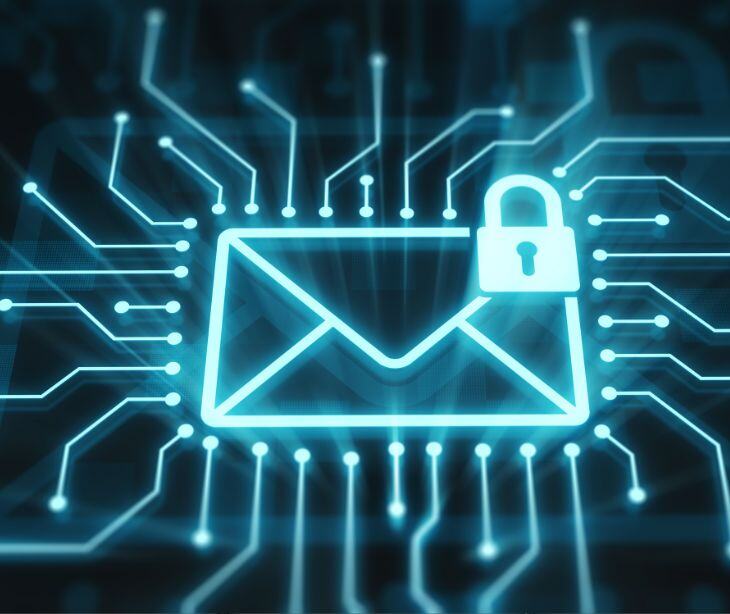
Developing secure messaging protocols safeguards sensitive data, ensuring privacy, and maintaining the integrity of communications. The goal is to establish a protocol that ensures confidentiality, authenticity, and availability while resisting unauthorized access or interception.
Importance of secure messaging
“Secure messaging is now fundamental for safe and efficient healthcare communication. It helps healthcare teams collaborate seamlessly and protects sensitive patient information, revolutionizing care delivery,” says Celo.
The digital environment is filled with risks such as hacking, data breaches, and cyber espionage. Secure messaging protocols are designed to address these threats by ensuring that communication remains confidential and intact.
Components of secure messaging protocols
Encryption
Encryption transforms readable data into an unreadable format using algorithms and keys.
Seamless encryption protocols are integrated into systems or applications in a way that doesn't disrupt the user experience. The encryption process happens automatically in the background without requiring manual intervention or noticeable changes to how users interact with the application.
Authentication and identity verification
Authentication ensures that the message sender is who they claim to be and that the message has not been altered. Authentication methods include:
- Digital signatures: A method where the sender signs a message with their private key, and the recipient checks it using the sender's public key. This ensures the message is real and hasn't been tampered with.
- Two-factor authentication (2FA): Enhances security by requiring two forms of verification—something the user knows (password) and something they possess (security token or biometric data).
Key exchange
Key exchange protocols enable the secure sharing of encryption keys between parties. Important methods include:
- Diffie-Hellman key exchange: Allows two parties to create a shared secret key over an insecure connection, which can then be used for secure communication.
- Perfect forward secrecy (PFS): Ensures that even if long-term keys are compromised, past session keys remain secure, thus protecting historical communications.
Message integrity
Ensuring message integrity involves verifying that a message has not been altered during transmission:
- Hashing: Creates a unique hash value for the message. If the hash matches when the message is received, it confirms the message is unchanged.
- Message authentication code (MAC): Uses a hashing algorithm and a secret key to create a MAC tag. The receiver checks this tag to verify the message is authentic and hasn't been tampered with.
See also: Differences between encryption and hashing
Secure channels
- Transport layer security (TLS): Encrypts communication between clients and servers, preventing eavesdropping and tampering.
- Secure real-time transport protocol (SRTP): Encrypts voice and video communication, making it essential for secure VoIP applications.
See also: The guide to HIPAA compliant text messaging
Access control and permissions
Proper access control ensures that only authorized users can access certain messaging features or data:
- Role-based access control (RBAC): Limits access based on user roles, ensuring that individuals only have access to the information necessary for their role.
- Tokenization: Replaces sensitive data with non-sensitive tokens, reducing the risk of exposure.
Data retention and deletion
- Automatic deletion: Messages can be set to delete themselves after a certain time, reducing the chance of data being exposed.
- Secure deletion: Ensures that deleted messages are completely erased from all storage locations, including backups.
Auditing and logging
Keeping records of communication activities helps in detecting anomalies and potential breaches. Logs should include details of message transmission, key exchanges, and any security-related activities.
Related: The role of audit logs in HIPAA compliance
Compliance with regulations
Secure messaging protocols must comply with industry regulations to protect sensitive data and ensure legal compliance. Examples include:
- The Health Insurance Portability and Accountability Act (HIPAA): Requires that healthcare providers use secure methods to transmit patient information.
- General Data Protection Regulation (GDPR): Mandates strict data protection and privacy measures for EU citizens.
Read also: The intersection of GDPR and HIPAA
FAQs
What is a secure messaging protocol?
A secure messaging protocol is a set of rules and standards designed to ensure the confidentiality, integrity, and authenticity of digital communications. It uses various cryptographic techniques and security measures to protect messages from unauthorized access, tampering, and interception.
What are some common threats to secure messaging?
Common threats include phishing attacks, man-in-the-middle attacks, and data breaches. These threats can compromise the security of messaging systems if not properly mitigated. Implementing strong encryption, authentication, and regular security updates can help protect against these threats.
How can I choose the right secure messaging protocol for my needs?
When choosing a secure messaging protocol, consider factors such as the sensitivity of the information being transmitted, regulatory requirements, and the specific security features offered by the protocol. Evaluate the protocol’s encryption strength, authentication methods, and compatibility with your existing systems.
Subscribe to Paubox Weekly
Every Friday we'll bring you the most important news from Paubox. Our aim is to make you smarter, faster.






